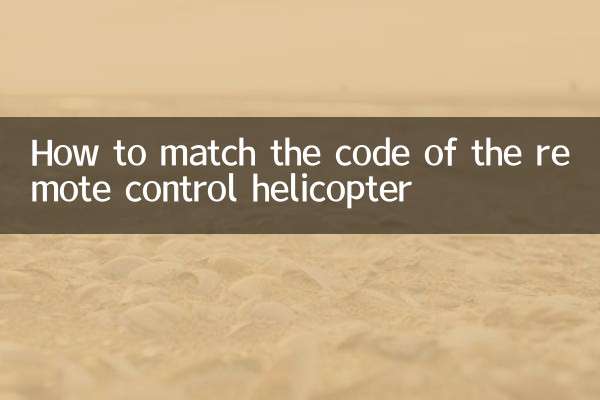How to make a simple remote control aircraft
In the past 10 days, the hottest discussions on DIY remote-controlled aircraft across the Internet have continued to rise, especially among technology enthusiasts and students. This article will combine recent hot topics to provide you with a detailed guide to making simple remote-controlled aircraft, and attach relevant data references.
1. Recent hot topics and hot content

The following are the popular topics of discussion on remote-controlled aircraft across the network in the past 10 days:
| topic | Popularity index | Main Platforms |
|---|---|---|
| DIY remote control aircraft tutorial | 85 | B station, Douyin |
| Low-cost materials for remote control aircraft | 78 | Zhihu, Tieba |
| Student Technology Competition Remote Control Aircraft Project | 92 | Weibo, Xiaohongshu |
| Environmentally friendly materials for making remote-controlled aircraft | 65 | YouTube, TikTok |
2. Guide to the production of simple remote control aircraft
1. Material preparation
The following materials are required to make a simple remote-controlled aircraft:
| Material name | quantity | Remark |
|---|---|---|
| Lightweight wooden board or foam board | 1 piece | Body main material |
| Small motor | 2 | Used to drive propellers |
| propeller | 2 | Match with the motor |
| Remote control receiver | 1 set | It is recommended to use the 2.4GHz band |
| Battery | 1 piece | 7.4V lithium battery |
| Glue, tape | Appropriate amount | Fixed |
2. Production steps
Step 1: Design the aircraft body
Design the fuselage according to the following parameters:
| parameter | Suggested value |
|---|---|
| span | 50-70cm |
| Body length | 40-50cm |
| Wing area | 300-400cm² |
Step 2: Assemble the power system
Secure the motor to the leading edge of the wing to ensure that the propeller does not touch the fuselage when it rotates. Pay attention to the positive and negative poles when connecting the circuit.
Step 3: Install the control system
Fix the receiver in the middle of the fuselage and connect the motor and the servo. Make sure all lines are neat and avoid interference.
Step 4: Debugging and Test Fly
During the first test flight, choose windless weather and perform it in an open field. Gradually increase the throttle and observe the attitude of the aircraft.
3. Frequently Asked Questions
According to recent questions from netizens, the following common questions are sorted out:
| question | Solution |
|---|---|
| The plane cannot take off | Check whether the motor power is sufficient to reduce the weight of the fuselage |
| Unstable flight | Adjust the center of gravity to ensure 1/3 of the front wing |
| Short remote control distance | Check the receiver antenna position to avoid metal shielding |
4. Safety precautions
1. Please wear goggles when making and flying
2. Avoid test flights in crowded areas
3. The flight altitude should not exceed 120 meters
4. Disconnect the power supply in time after the battery is fully charged
5. Advanced suggestions
For producers who want to further improve, consider:
1. Add flight controller to achieve automatic balance
2. Install camera to achieve FPV flight
3. Use 3D printing parts to improve accuracy
Through the above steps, you can create a simple remote-controlled aircraft. According to recent hot topics, DIY remote-controlled aircraft is not only an interesting scientific and technological activity, but also can cultivate hands-on ability and scientific thinking. Hope this article provides you with practical guidance.

check the details

check the details